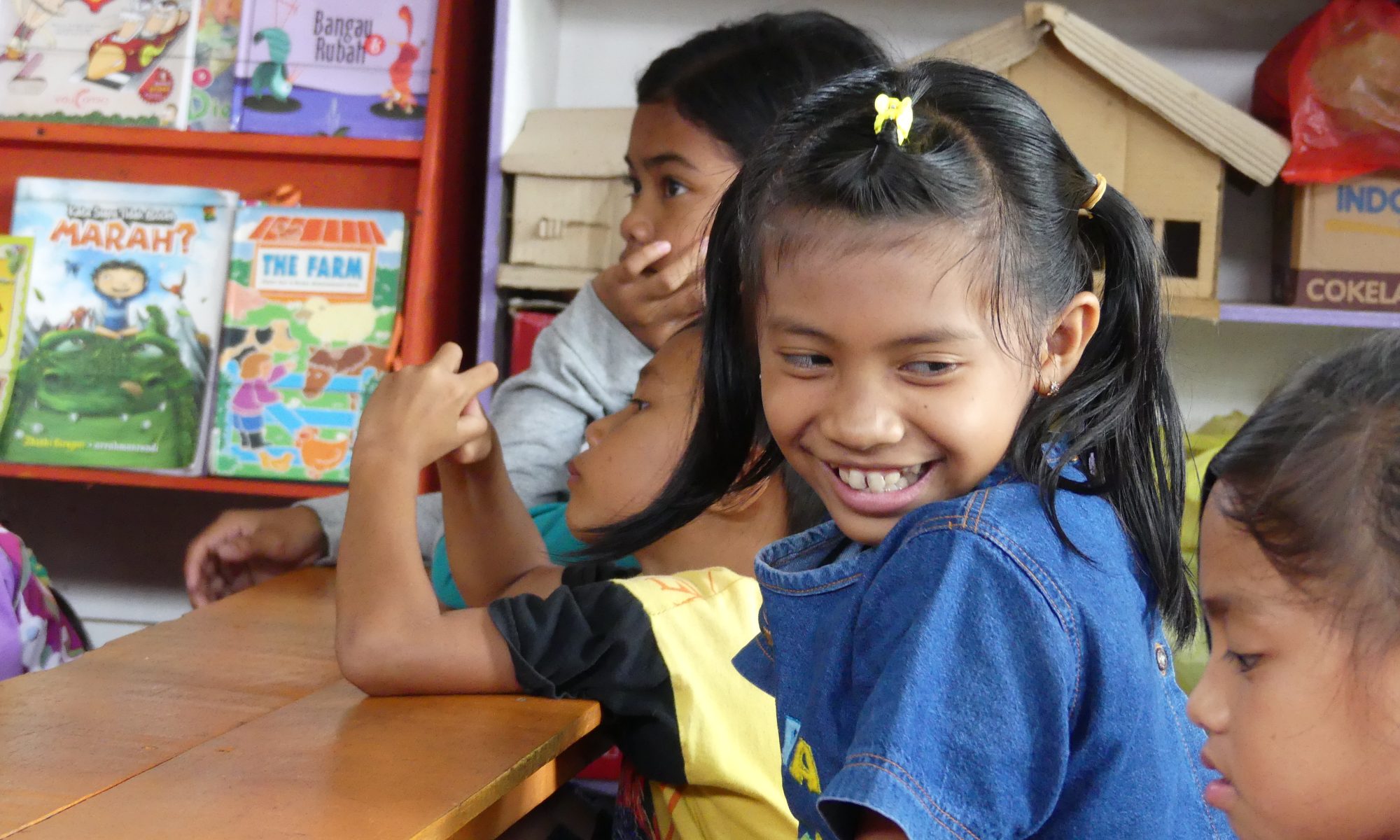MEDyARTE Foundation Brings Clean Water to Remote Village in West Kalimantan
 This year, the MEDyARTE Foundation successfully provided water filters to a third village in the West Kalimantan region of Borneo Island, Indonesia. The village of Katingan is a remote community, nestled deep in the jungle and accessible only by a longboat journey along a treacherous, in places shallow, and rocky river.
This year, the MEDyARTE Foundation successfully provided water filters to a third village in the West Kalimantan region of Borneo Island, Indonesia. The village of Katingan is a remote community, nestled deep in the jungle and accessible only by a longboat journey along a treacherous, in places shallow, and rocky river.
Life in Katingan is incredibly challenging. The lack of access to basic healthcare puts lives at constant risk, especially when compounded by poor living conditions and the absence of sanitation. The local river—polluted and unsafe—is the only available source of water for drinking, cooking, and washing. With no electricity or internet, the community has few resources to improve these conditions on their own.
Providing access to clean drinking water has always been one of the top priorities for the MEDyARTE Foundation, and we are proud to have made a meaningful impact in Katingan. The community welcomed our support with deep gratitude.
We are hopeful that the introduction of water filters will lead to a significant reduction in waterborne illnesses, particularly gastroenteritis, and improve overall health outcomes—especially among the most vulnerable: the young and the elderly.
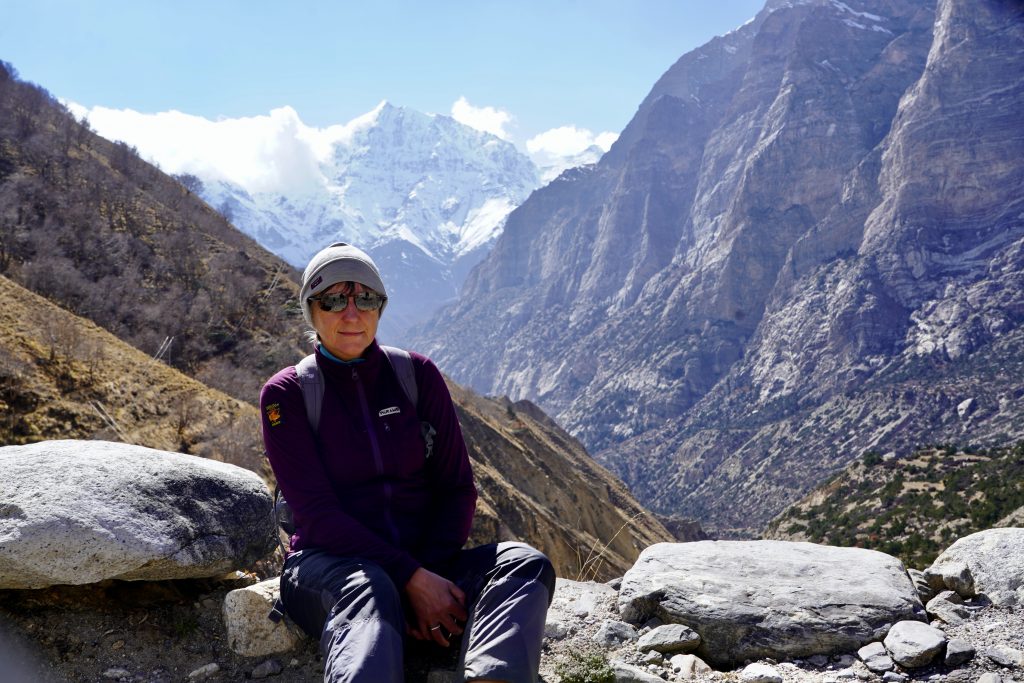
Helicobacter Pylori Project, Nepal October 2022
By Dr Gosia Trubshaw
Founder of MEDyARTE Charity
The last few weeks were a complete roller coaster of emotions: happiness, exhaustion, fulfilment, extreme discomfort due to cold, awe at the amazing surroundings, physical pain of the muscles, total relaxation from the problems back at home, anxiety created by complicated organisational issues … This is the experience from Nepal, the remote area of NarPhu valley in the Manang district where we carried out our Helicobacter Pylori project.
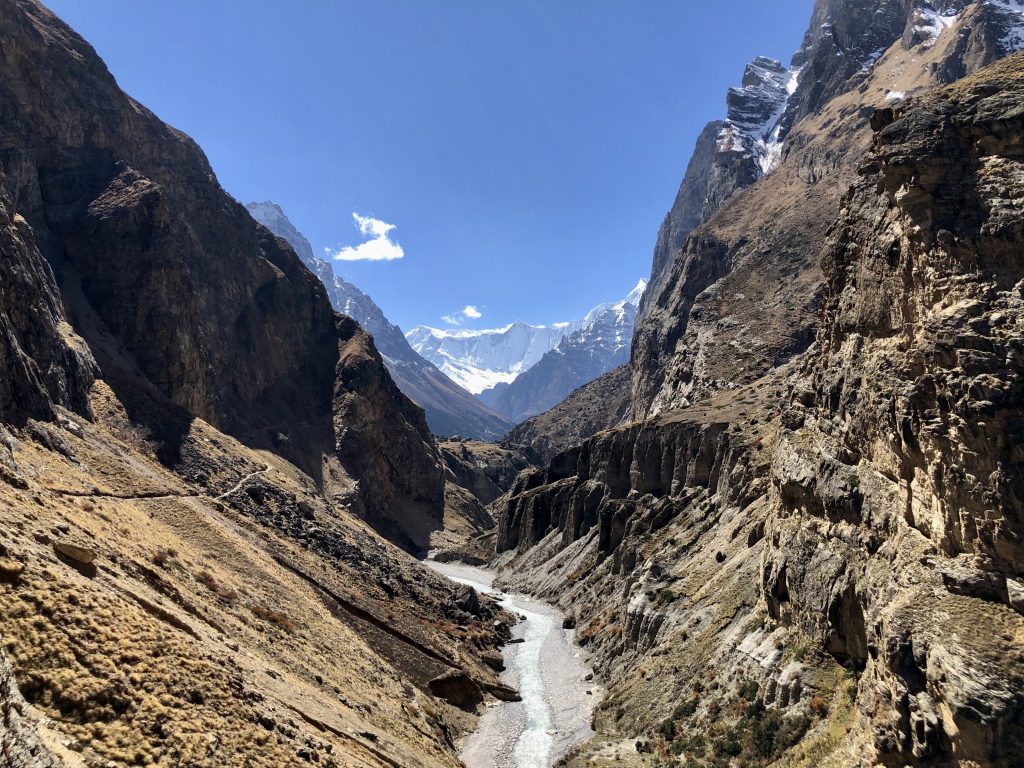
Three years ago, I visited this location for the first time and I fell in love with it; with the
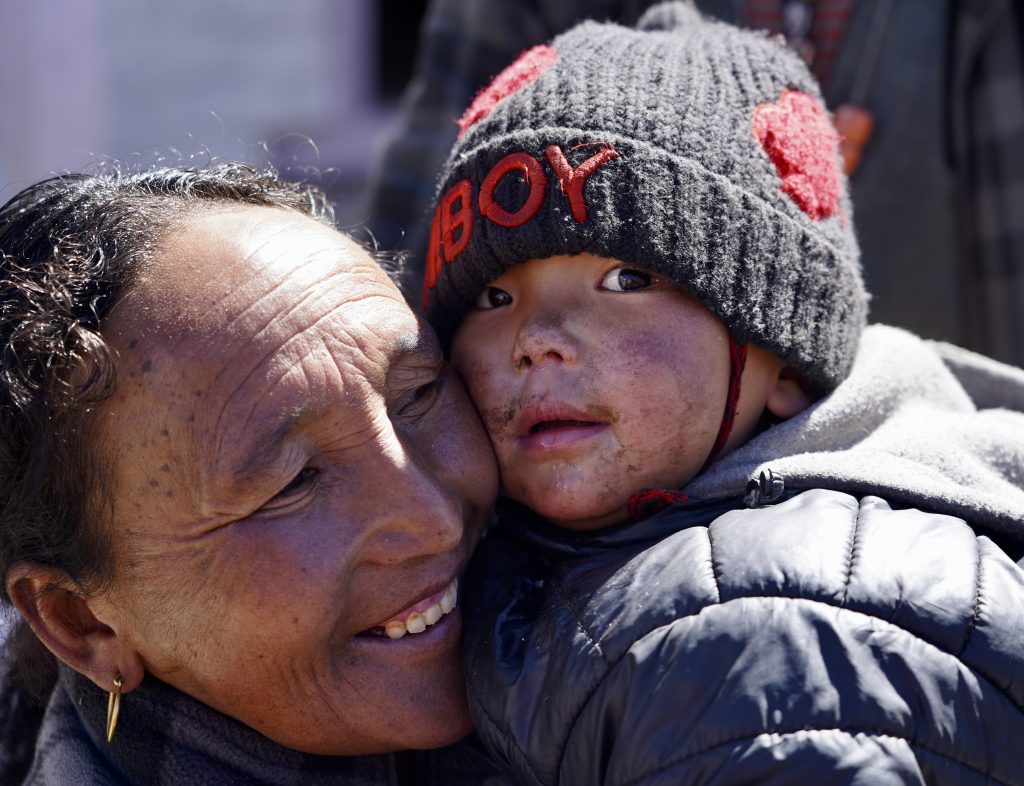
astounding beauty of the place, with the people who are warm and friendly, with the feeling of being cut off from the rest of the world and the problems of the developed world. I set up a charitable medical clinic in response to the great need of the local population who are incredibly deprived in all aspects of their lives. Basic human needs are not fulfilled here- there is no sanitation, often no running water, no heating, very limited food supply and NO medical care. The people who live here push the boundaries of what is feasible for human habitation and they are left to their own devices when they become sick and unwell.
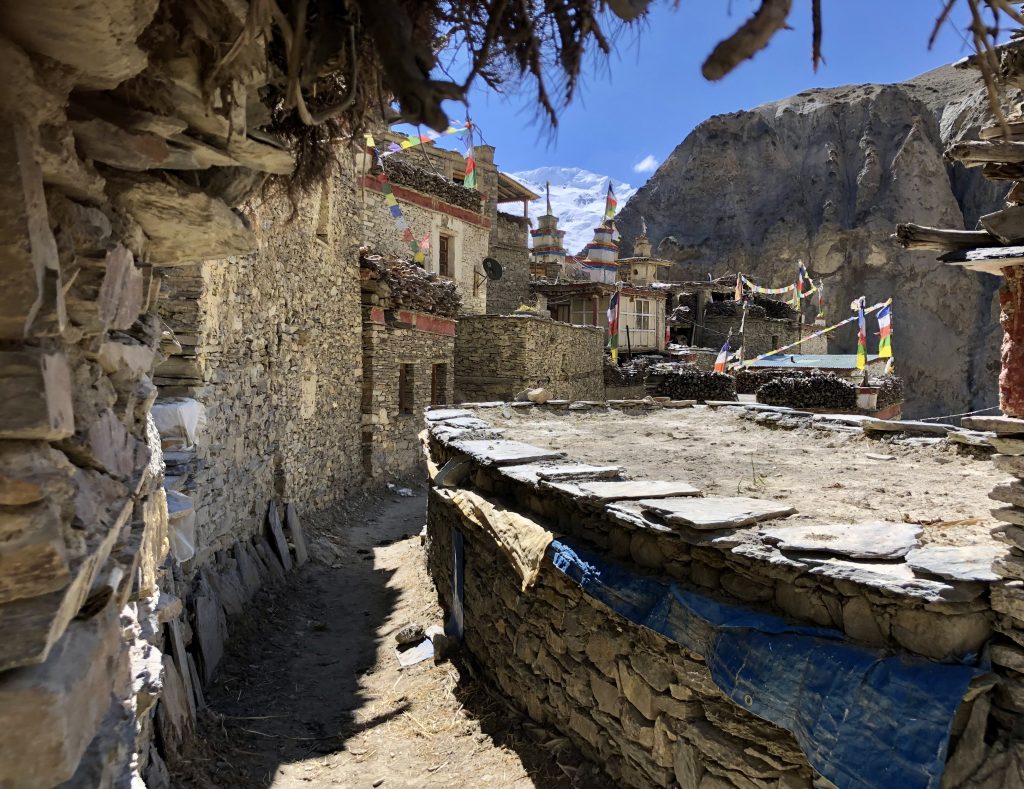
It just did not feel fair or right. I had to do something. The clinic supported by MEDyARTE Foundation offered them at least a small part of the normality which in other parts of the world is assumed to be a human right and essential element of existence. Since its conception the clinic saved many lives and has put smiles on the faces of the local inhabitants.
During my visit in October 2022 I decided to go one step further. I had noticed on my previous encounter with patients here that a significant percentage of the population suffered with gastritis. This condition is common around the world and frequently associated with a bacterial infection caused by Helicobacter pylori. Nowadays easily diagnosed and easily treatable, it should not really remain to be a bane of people’s lives. An appropriate intervention can make a significant difference and help to avoid daily suffering as well as long term more sinister complications. I decided to assemble a group of dedicated individuals and head for the mountains to diagnose and treat as many people as possible. Our team was just fantastic: Michael my son who qualified 2 years ago as a doctor, Raj- a Nepali doctor working usually in the valley down below, my husband Richard who entered all data on a computer, Choden – a Health Assistant and Public Health specialist who helps to run my clinic in Nar Phedi, Sunam – a volunteer Health Assistant, Mingmar our Sherpa and I. Everyone was totally committed to the cause and ready for anything. We trekked together from Chame to Phu, Nar Phedi, Nar and finally across the formidable Kang La Pass at the altitude 5320m to Manang. The trekking itself was incredibly challenging due to high altitude, many hours of walking, extreme cold- temperatures dropping down to minus 20C at night and the absence of any comforts. But what was most exhausting was the fast pace of our expedition with no time for rest. The only time we stopped anywhere was to do a day long clinic in four different locations. Clinics would start at 10am and continue until 6pm with an endless stream of patients flowing through our doors. We saw all together in excess of 400 people with the most diverse medical problems. What was important however was that we saw a large number of gastritis sufferers who we were able to test and treat.
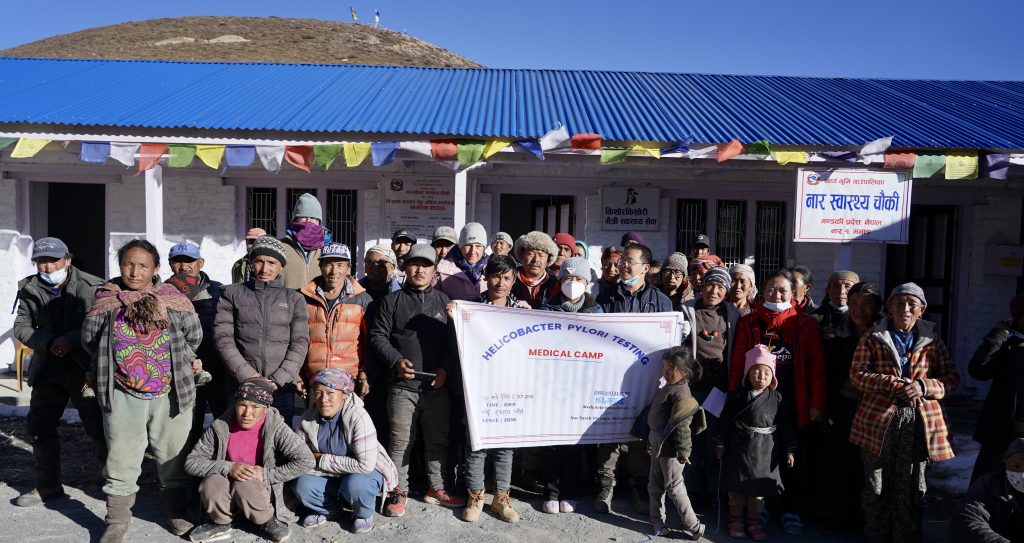
The outcome of our testing was shocking and eye opening. In the most remote mountain communities 99% of patients who suffered with the symptoms of gastritis were positive for the infection with H. pylori. Even in my wildest dreams I had not imagined this could have been the case. In the UK the prevalence of H pylori is now dropping to below 15% in some areas although worldwide it probably affects 50% of the population. There is definitely no doubt that our population was significantly worse off and needed urgent help and what a joy that we could provide it.
I think that every person from our team was deeply affected by the project. The work and the effort required to successfully complete the trek has made us very close together. Here are a couple of quotes by other members of the team.
Dr Raj said “I am so lucky and proud to have had an opportunity to work with you helping the poorest people in the most remote area of Nepal. I’m so grateful to be a part of this beautiful work. Thank you, guys, for coming and helping the neediest people! The inhabitants of Nar and Phu were extremely grateful and satisfied with the medical camps. They were so happy that doctors came to their villages. We are so thankful for your help and kindness towards us. Hoping to see you next time in similar circumstances.”
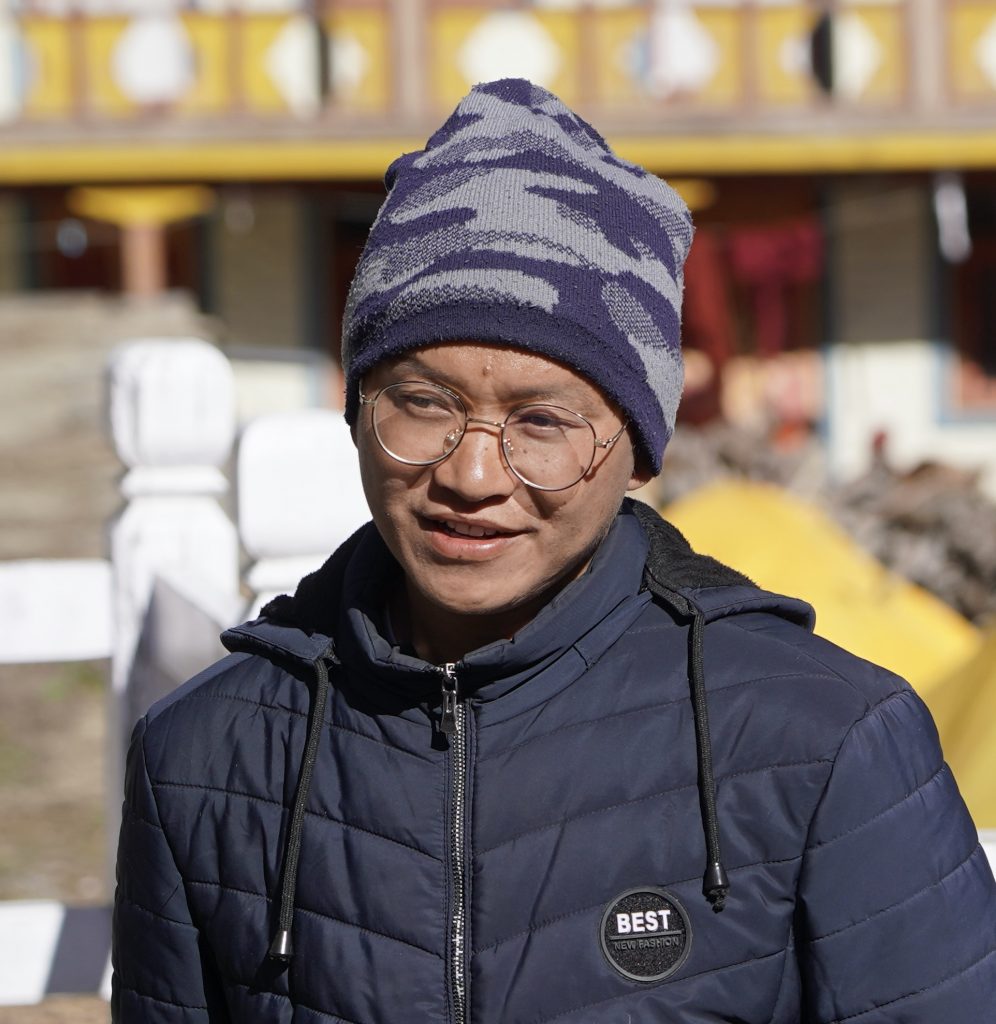
And Choden, the Nar Phedi clinic coordinator, who has been working with me for the last 3 years said: “It was hard, challenging but also fun. We were able to help more than 400 patients in mountain areas which is fantastic. Even though the road and transportation were at times a major problem and things not always went to plan we were able to make everything work smoothly and face challenges together. The people were very happy and appreciative of what we have done for them, everyone was very satisfied with our team members and wished for more helping hands in future.
I learned many lessons from this project and got an invaluable experience of how to deal with unforeseen circumstances and different people in tricky situations. I am very grateful, thank you.”
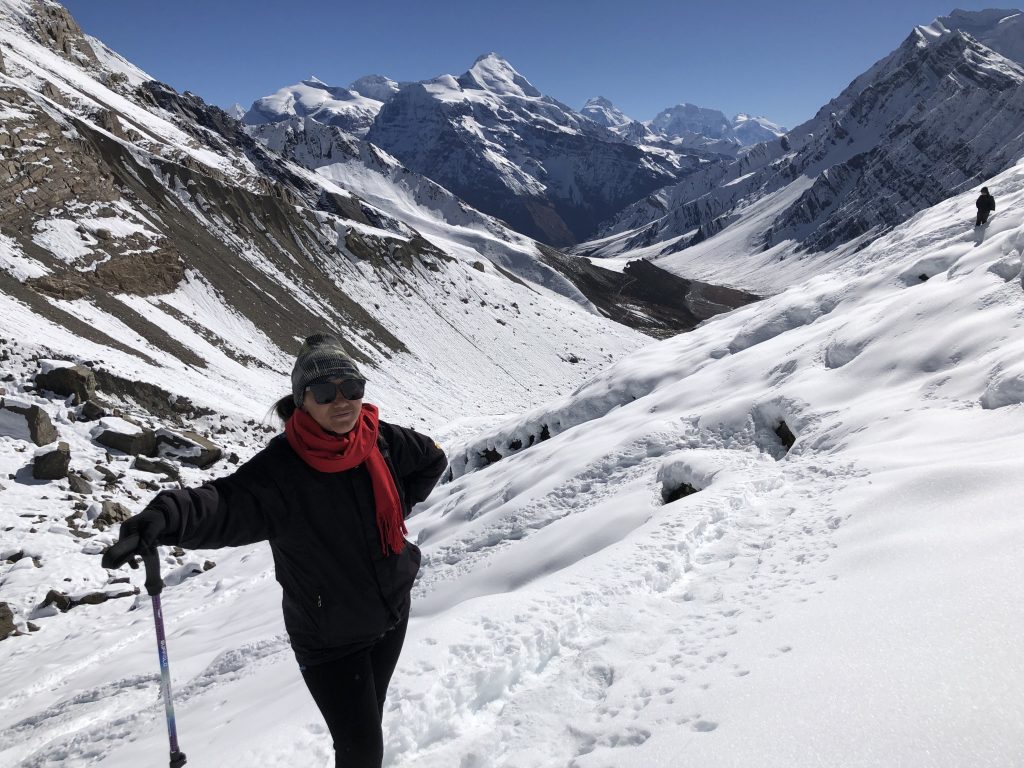
Finally, Michael wrote in his report from the journey:” On reaching the peak of Kang La Pass tears came to my eyes as I gazed out at the scenery below. Despite the bodily pain, my overriding feeling was one of inner peace; existing in such an inaccessible place gave a perspective on my life that I had never before experienced. The life issues which seemed so important when I was at home in England suddenly felt utterly insignificant. I felt an overwhelming gratitude for the chance to have helped so many people in Nepal and for all the kindness they had shown me along the way. I promised myself that this would not be the last time I worked on a project with MEDyARTE.

Thank you to everyone involved in this project, I could never have done it without you. It was an amazing, fulfilling, wonderful experience.
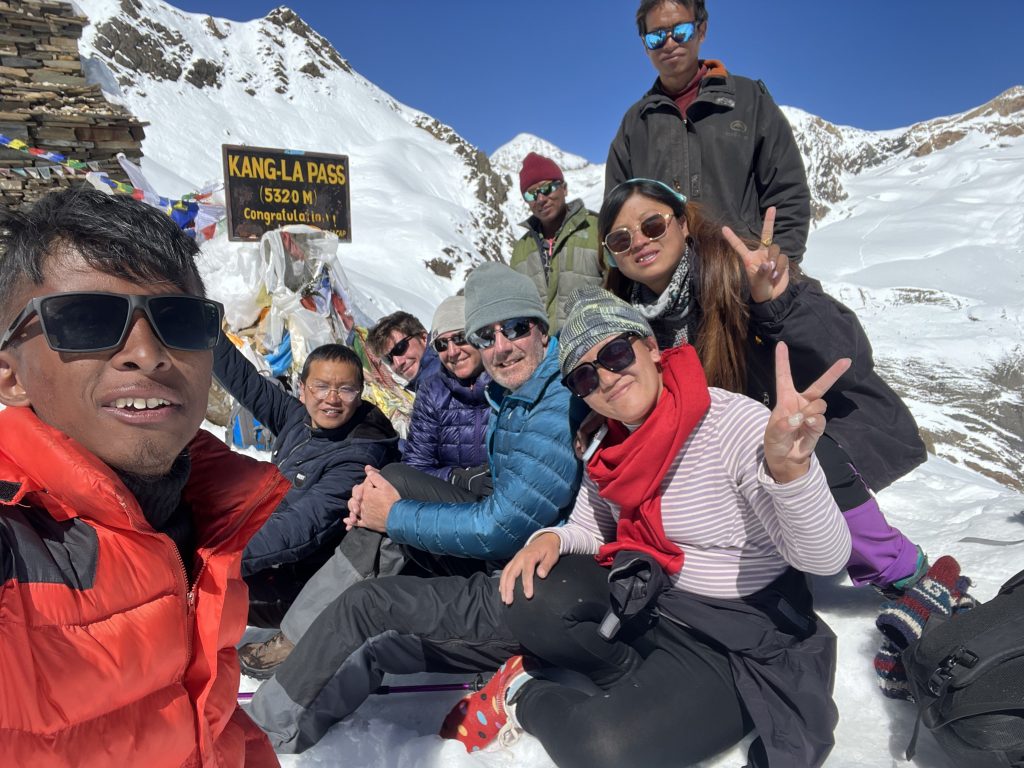
for Michael’s report – click here Helicobacter Pylori Project
Nepal – November 2019
Personal account by Choden Yangchen Lama, who was in charge of organising the clinic on the Nepalese side
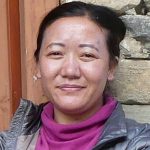 The opening of Nar Satek Thrangu Shenphen clinic was held on 4th November 2019 in Narpabhumi rural municipality which lies in the northern part of Nepal Hong at 4220 m. The opening ceremony took place in the presence of the local government representative, founder of MEDyARTE Foundation Dr Gosia Trubshaw and its Trustee Mr Tomasz Mazur who are the financial supporters of the clinic, Mr Tsering Khamsung who will act as the manager and myself.
The opening of Nar Satek Thrangu Shenphen clinic was held on 4th November 2019 in Narpabhumi rural municipality which lies in the northern part of Nepal Hong at 4220 m. The opening ceremony took place in the presence of the local government representative, founder of MEDyARTE Foundation Dr Gosia Trubshaw and its Trustee Mr Tomasz Mazur who are the financial supporters of the clinic, Mr Tsering Khamsung who will act as the manager and myself.
The opening of the clinic went very smoothly and was followed by a free medical camp at Nar village. The local people were very happy and excited about opening of the clinic which will provide free medical services to the entire community. They are especially grateful that the clinic will operate in the winter season which is a particularly difficult time of year for them. They are very thankful to the whole team for helping them and for bringing such an opportunity to the inhabitants of the Nar Phu Valley.
It was always my dream to open a free clinic in the village where I was born and I am very touched that it has happened. I am much obliged to all the people who have helped and have lent their support to make it a reality and am personally grateful to every single one of them.
I was in charge of planning the clinic on the Nepalese side. It is not easy to organize something like this especially when you are doing it for the first time. I had difficulty in getting an approval letter from the local government for the clinic as I am still young and at the beginning they didn’t take me seriously. It was a challenge to make a list of the necessary medicines and equipment required for the clinic, buying such a significant amount of drugs, arranging transportation for the medication and equipment to the mountains as it was during a festival period as well as selecting and hiring a Health Assistant to work in the clinic which is located so high up in the mountains. However, despite all the difficulties I had faced we succeeded in setting up the free medical clinic which was the happiest and most joyful moment of my life. I felt that Buddha came personally to visit me!
Finally, I would like to pass a message from the local people of Nar and Phu: “ We are very happy and grateful to MEDyARTE Foundation for the clinic and for helping us. Thank you”
El Salvador reconnaissance tour 2019
El Salvador, known as the Land of Volcanoes, is the smallest and most densely populated country in Central America. It became independent from Spain in 1821 but in the twentieth century experienced a 12 year civil war which eventually came to an end in 1992. As a result, 20% of El Salvador’s population resides abroad, mainly in USA, Mexico, Guatemala, Honduras and Costa Rica and the country still struggles with a significant amount of poverty. Its recovery has been further affected by natural disasters including earthquakes in 2001 and hurricanes in 1998 and 2005 as well as a marked amount of crime related to gang activity. Despite this El Salvador is the fourth fastest growing economy in the region.
I have travelled 900 km across the width of the country visiting various communities of artisans with a view to finding a location for a new project for MEDyARTE to support. I cannot imagine a more deserving population – hard working, warm and kind and determined to succeed despite an extremely hard financial situation.


Hotel in La Palma and a mural in town
I started in La Palma which is renowned for its traditional wood paintings and murals. La Palma is located on the slopes of the highest volcano in El Salvador – El Pital, surrounded by mountainous scenery and blessed with a cooler climate which gives respite from the heat and high humidity of the lower lying regions. By the time our team reached La Palma at midnight, despite the fact that the hotel staff were expecting us it turned out to be far too late for them to be present, everyone had gone home to sleep! It was very lucky that our guide managed to rouse the owners of a little hostel opposite the hotel who offered us some basic accommodation for the night! At 6am the following day I was woken by a cock crowing and birds singing and my eyes were met with the idyllic scene of a sleepy mountain village. The hotel doors opened and we had the pleasure of meeting the town mayor and a group of local artisans who presented to us their wares. They proudly displayed beautiful fabrics coloured with traditional natural dyes, jewellery made out of a variety of indigenous seeds and wooden hand painted decorative boxes and crosses. We shared breakfast together and spent some time discussing the needs and hopes of this community. Their main problem seemed to involve gaining access to wider markets for their products.
 Artisans in La Palma
Artisans in La Palma
Soon we were on our way again. Climbing steep inclines we were grateful for our four-wheel drive pick-up truck. The numerous hairpin bends were at times heart stopping. On the way we passed endless small wooden abodes and villages intermingled with truly magnificent scenery of the lakes and mountains. Eventually, before finally arriving in Ilabasco, we passed a little gem of a town, Sichitoto, a remnant of the old colonial times.
In Ilobasco we were delighted to meet a diverse group of artisans famous in the region. Their signature products included miniature clay designs, particularly of Christmas scenes, which can be found in shops even in San Salvador city. I was amazed to witness a production of these pieces by a young mother of two in the back yard of her hut; she was creating these minute pieces of art, which would fit in an egg shell, by hand, using only the most basic implements. At the same time, she seemed to be in charge of childcare, household chores and a variety of elderly relatives residing in her home. The sweltering heat was making it difficult to breathe.


Miniture clay gifts Ilobasco
It was hard to believe that she was one of the lucky individuals in her community as she was able to use her artistic skills to improve the economic standing of the entire family. Her wooden house was considered to be superior to many other households as it stood on the outskirts of the town which meant that the air was cleaner and there was shade from a green tree in the garden. Together with other artisans in town she formed a type of cooperative which provided mutual support. Another particularly outstanding member of this group was a duo of an older man and his apprentice who had built a studio for creating clay pieces based on old Mayan designs as well as some more modern, bespoke items which demonstrated great skill and talent.
 Old Mayan and modern designs in a pottery studio Ilobasco
Old Mayan and modern designs in a pottery studio Ilobasco
The next stop on our tour, San Sebastian, was famous for its weaving industry. Nearly every family there possesses a loom or works as a part of a weaving cooperative. Men would normally start work at a loom at 5am and continue for 12 hours with a half an hour break for lunch. Women were usually employed to prepare thread for weaving as this is considered a slightly lighter job. A lot of the woven fabrics are utilised for the production of hammocks which are commonly used instead of beds. Interestingly, although the producers are keen to use natural fibres such as cotton they rarely do so as the local population, who are the main customer for their goods, simply cannot afford it. Sadly, skills involving intricate fabric designs are getting gradually lost as the old generation of artisans dies out and the younger ones are more interested in computer technology then working on the looms. Weaving is however here to stay as it constitutes the backbone of this community and the main source of income. The working conditions are extremely basic and harsh. The wooden looms seem to be in desperate need of tender loving care, so it filled me with awe to see what high quality products are manufactured there.
 Fabric factory San Sebastian
Fabric factory San Sebastian
Finally, we visited the Morazan region famous for its unique black clay industry. The town of Guatajiagua is the centre for this low temperature fired black pottery created originally by the pre-Hispanic Lenca people. Most of the population has inherited the skill of crafting black clay utensils from their grandparents. This ceramic is different from the others found in the rest of El Salvador due to the liquid wash produced from “nacascolo” seeds, which gives it the unique black colour. I was privileged to observe the entire process of production from the drying of the excavated clay in the sun, shaping it without the use of a pottery wheel into a
 Black pottery production Guatajiagua
Black pottery production Guatajiagua
variety of crockery items, preparation of the nacascolo dye and eventually to the firing of dishes in specially made ovens fuelled by hand collected wood. The firing process only lasts three to four hours which unfortunately means that the pottery is rather fragile. Nevertheless, its rustic beauty cannot be denied and the local population uses it widely on a daily basis for cooking.
 Oven for firing black pottery and the products
Oven for firing black pottery and the products
The last leg of our journey took us to a small village in the mountains where I was able to offer my services as a doctor in a small medical clinic. This was an experience which was equally humbling and uplifting. Although the health service in El Salvador is free, patients usually have to pay for their own medication, some of the investigations, the cost of travel to distant locations where a specialist can be found and accommodation during such a visit. As a result, a significant proportion of the population cannot afford such expenditure. The clinic I helped at was set up by a charitable organisation which meant patients did not have to pay for their management or medication. Only a very limited amount of medicines was available to treat an extensive number of often very significant problems. Patients would line up from early morning, wait without grumbling for their turn and listen carefully to the advice given with an air of appreciation and gratefulness. Despite incredible heat, limited resources and a huge number of patients this was an experience that was probably one of the most rewarding in my professional life. It put into perspective my medical work in the UK as well as issues and problems with which I struggle on daily basis.


NGOClinic and the team of charity workers
We are now awaiting proposals from various artisan groups we have visited during our reconnaissance tour and hope that after reviewing them we will be able to put in place a new programme in El Salvador. Clearly there are many elements that need to fall in place before this can happen but we will continue to work to resolve these in a satisfactory manner.
Opening of the new library in Marang
View pictures from the opening ceremony
“It was such an amazing day when we had the opening ceremony. The party started at 2pm on Friday. We had around 200 people who came. Amongst them there were David Metcalf and his photo tour group. We also had our NGO friends who work on other education projects, the local media and a few government people joining in. We prepared local sweets to be served after the ceremony: these were all prepared by the ladies from the village. Everyone was so cheerful and happy; children performed dance, music and poetry for the guests. Thank you for supporting us with this project!“
By Aini Abdul
On 13th of May 2018 the second learning center for Ransel Buku was officially opened in a small village of 250 people called Marang, about one hour by road from the city of Palangkaraya which is also accessible by boat.
This village of Marang has little or no support from the government in terms of education, teaching or materials. That has now changed thanks to MEDyARTE, and their kind and generous support!
The entire village came out to watch the official celebration and opening of the learning centre. I would say over 200 people were present including most of the parents, who were as excited as the children!
There were traditional Dayak dance performances by the children from Katimpun Village where the first learning centre is located – they have been taught dancing for the past 2 years in an effort to preserve the Dayak culture among the young. They were very proud to be able to show off their dancing abilities and everything they had learnt.
The children from Marang Village watched with great interest as they had never seen anything like this before.
The Spirit of the Hornbills Dance Academy, which gives dancing lessons to children in Katimpun village library, also came from Palangkaraya and donated their time to join in the celebrations.
The new teacher that MEDyARTE supports made a speech and one of the older Marang children read some poetry which had a lot of the mothers crying.
It was a very emotional day and the children were so excited to show the guests their new library, which they had spent many days painting. It looked beautiful with many books on the shelves that the children couldn’t wait to read.
Magic happened that day!
These children now have hope and feel very special because people like Gosia care about them and believe in the importance of a good education.
Thanks once again, it will be exciting in the future to watch the development of the children and help them achieve their dreams.
By David Metcalf, the photographer who helped Ransel Buku to build the first Library in Katimpun village
Jeroen’s story
Water filters have finally arrived in a village of Katimpun in Central Kalimantan on Borneo and have been distributed amongst its population! Hopefully they will contribute significantly to the improvement of health in this community and will become a first step on a road to clean water supply in the region. Here is an emotive personal account by Dutch born Jeroen who on behalf of MEDyARTE was responsible for the delivery and educational event in the village:
” On beautiful morning, Friday 29th June, I was on my way to Denpasar airport on Bali to fly to Palangkaraya in Central Kalimantan to distribute 104 water filters in the nearby village of Katimpun when I read on my phone that the airport was actually closed since 3 am and all flights had been cancelled due to volcanic ash from Mount Agung eruption the day before.
After arriving at the airport, without hesitation I decided to take a bus from Denpasar to Surabaya in East Java, which is a stopover on the way to Palangkaraya, a 16 hour ride! I knew I could not fail the people in Katimpun!
We were the second bus to Surabaya organised by Bali authorities to leave Bali Airport. The Governor of Bali, Mr Made Pastika personally came to greet us on our bus just before leaving Bali Airport at 11 am, wishing us a good trip!
Around 3 pm during a lunch stop news came that Bali Airport had reopened at 2.30 pm! A few tourists decided to return to Denpasar, which I knew was a big mistake, as 75 000 passengers got affected by the 12-hour closure of the airport and a huge waiting time would follow due to the fact that all cancelled flights had to be rescheduled. I however continued my trip on the bus to East Java, took a ferry with the bus between Gilimanuk in Bali and Banyuwangi in East Java. Once in Banyuwangi, we were still 300 kms and 7 hours away from Surabaya airport.
When we finally arrived at Surabaya airport at 2.30 am on Saturday morning the direct flight to Palangkaraya was already full, so I had to opt to fly through Jakarta on another 7 hour journey to reach my final destination.
As soon as I arrived in Palangkaraya at 1.45 pm on Saturday afternoon, after a total of 28 hour journey, I drove directly to Katimpun which I finally reached at 3 pm.
The volunteers in the village had already started the presentation about the water filters and good hygiene habits.
Despite having had only 1 hour sleep that night and an exhausting trip behind me, I was able to efficiently execute the work I came to do.
After explaining how to use a water filter and how to clean it we distributed 104 water filters to the women in groups of 5, asking them to assemble each filter under supervision before going home. This is a crucial step and the women understood that. So, they were patiently waiting for their turn. Before going home with a water filter, every woman thanked me on behalf of MEDyARTE. It was very touching.
It was a fantastic experience, the women were very attentive and at the same time, we had a lot of fun. They were super happy and thankful for the water filters.
The distribution finished at 6.45 pm.
What an incredible day, full of emotions! I will remember it for a long time. Guess what, I slept like a baby that evening! “
Borneo 2018 – our visit one year later
We travelled to Borneo at the end of August 2018 to assess the progress of the two projects currently supported by MEDyARTE Foundation. Indonesia again overwhelmed us with its colour, humidity and noise. Luckily, fires in the jungle which were burning only a few days earlier had been extinguished by premature heavy rain. This was a relief to hear as often, fires which are started against the law to clear patches of jungle for palm tree plantations, get out of hand. Fire travels through the pithy undergrowth destroying large sections of the rain forest which in turn disturbs the delicate environmental balance: this can cause floods during the rainy season and the extinction of various flora and fauna specimens notably orangutans.
Our purpose however concerned other matters. Firstly, we went to visit the recently opened children’s library in Marang village. We had a truly royal welcome. Although as a result of flight delays children and parents waited all morning for our arrival, they welcomed us warmly with several traditional dances, dressed up beautifully in the local costumes. They had been practicing these dances for several months. It was heart-warming to see such dedication, enthusiasm and happiness in their performances. Even though the children were divided into three age groups the quality of all the dances was astounding across the board. This is particularly impressive since they learn dancing under the tutelage of a single teenager, themselves very talented but untrained as a teacher.
Thereafter we had a chance to meet with the owner of the building, leased to us on a long-term basis with the purpose of creating the library. We were joined by other mothers from the village as well as the teachers. We spent some time listening to comments and opinions about the library and discussing plans for its future development. Both children and parents were unanimous in their praise of the wonderful changes this project has brought to their community. We heard repeatedly about children’s significantly improved school performance, improved class discipline and positive changes in their behaviour and ability to concentrate. Everybody was deeply grateful for this opportunity. When asked about what would make the library even more effective everybody expressed the same wish – to enrich the library programme with organised teaching of dance, singing and traditional instruments.
I think that such a request reflects the incredible success of the whole project, as it has clearly rekindled in people a pride in their own cultural heritage and a desire to cherish it.
We also visited Katimpun village where at the end of June all the inhabitants received water filters from MEDyARTE Foundation. We visited several households and chatted to families who have benefitted from the scheme. Everyone was delighted with the equipment. The village had stopped purchasing water in containers which on average saves 120$ per family per year. Most importantly however, everyone we spoke to reported that the frequency of diarrhoeal illness had reduced dramatically and become almost non-existent. The midwife who serves as a nurse to this community has confirmed that this seems to indeed be the case. The only negative comment we heard from the inhabitants was that they would prefer to have two water filters per household rather than one!
At the time of delivering the filters we gave a small amount of money to the midwife for the purpose of organising an educational event in the village concerning sanitation and hygiene. The remainder of the money was used during our visit to perform blood group testing for all the village children which normally is quite a costly undertaking if needed during a visit to the hospital. Mothers of the children prepared a healthy meal for all the little “patients” consisting of a broth with beans and rice with chicken.
Following our return to Europe we are working hard on a plan to supply more villages with water filters, create additional children’s libraries and to educate a dance/music teacher for the surrounding villages.
This is such an exciting avenue for future development!
